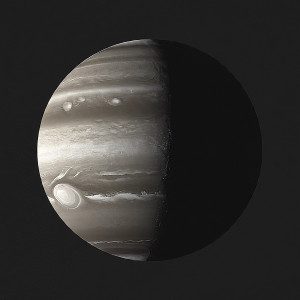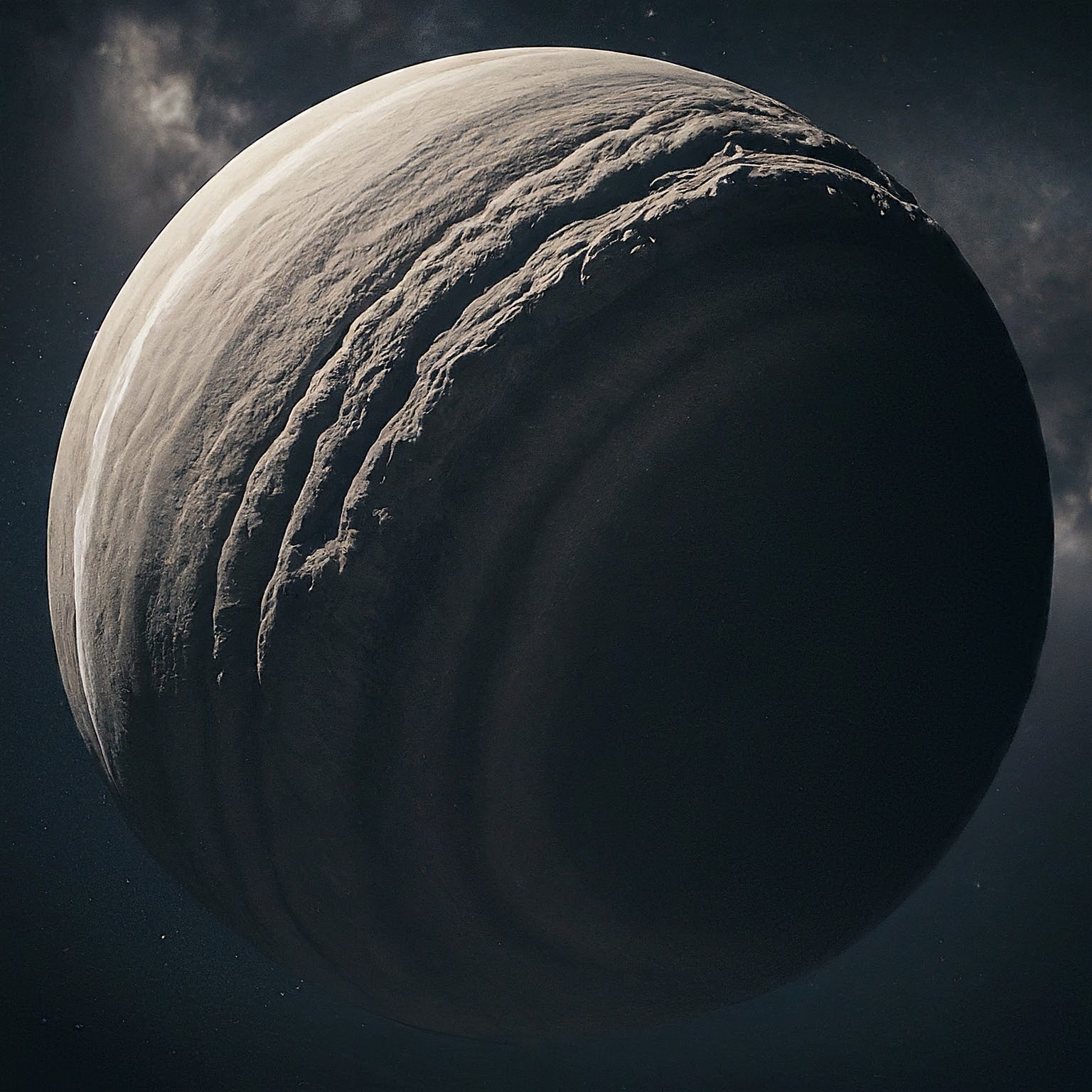Surface Features

Iapetus has an unusual walnut-shaped form, with large elevation differences of up to 20 kilometers between the equatorial bulge and polar depressions. The most striking surface feature is the equatorial ridge spanning nearly 75% of Iapetus’s 79,000 km circumference, reaching over 20 km tall and 70-90 km wide. Theories on its formation include partly remnants of an ancient ring system around Iapetus that eventually rained down onto the surface as the rings collapsed over time.
On the dark leading hemisphere composed of reddish lag deposits, small impact craters display bright ice deposits up to 500 meters thick along their floors. These indicate shallow subsurface ice layers being excavated by meteorites. The brighter trailing hemisphere hosts several large impact basins reaching over 500 km in diameter and up to 15 km deep. These display central peaks and terraced walls indicating a relatively young surface age on geological timescales. Bright icy layers likely evaporated from the warmer (~130 C) darker areas and re-condensed in polar cold traps down to -220 C.
Internal Structure
Gravity field measurements by the Cassini spacecraft indicate a differentiated internal structure, with an estimated silicate or iron-rich core making up 20-30% of Iapetus’s total mass and radius. This dense core likely grew from rapid accretion early in Saturn’s history and is overlain by a global subsurface ocean and thick outer ice shell comprising 70-80% by mass. The varying ice shell thickness between the equatorial bulge (~50 km thick) and polar plains (>100 km thick) suggests early internal convection and partial melting helped support the Iapetus’ shape while the interior cools.
Iapetus’ overall bulk density of 1.16 g/cm3 is less than Saturn’s other major moons, between 1.15-1.5 g/cm3, indicating a composition by mass of around 80% water ice, 15% silicates, and 5% metals. Porosity in the dusty ice reaches up to 20% in places as modeled from the gravity data. This points to Iapetus coalescing later and more slowly when Saturn’s sub-nebula gas disk was colder and less dense compared to the formation locations of Mimas, Enceladus, and Tethys nearer to Saturn.
Exploration History

The Cassini spacecraft extensively studied Iapetus over its 13-year mission orbiting Saturn, including several close-targeted flybys to map the moon’s surface at resolutions down to 10 meters per pixel. On December 31, 2004, Cassini passed within 123,400 km of Iapetus, returning detailed images of the equatorial ridge and spotting the first signs of a color dichotomy.
On September 10, 2007, Cassini skimmed within 1,227 km of Iapetus’ surface, closer than any previous mission. This enabled the mapping of local variations in cratering and examinations of dark material deposits and bright icy layers. Additional flybys produced stereo topography models, chemical composition spectral scans, and data on Iapetus’ surprisingly strong gravitational field and implications for its interior.
Future Iapetus Exploration With Cassini’s mission ended, future mission concepts proposed for Saturn’s system identify Iapetus as a compelling target for further in situ investigation. The NASA Dragonfly concept plans to dispatch rotorcraft to perform aerial surveys and sample analysis across Saturn’s moon Titan. This drone swarm technology could be adapted to explore Iapetus and perform detailed chemical mapping of the stark light and dark terrain.
More ambitious concepts such as the Titan and Enceladus Explorer (TEE) proposal envisage balloon platforms equipped with drilling gears to extract and analyze subsurface ice cores. Landing probes onto Iapetus could study geophysical processes like ice volcanism and vapor deposition up close while sampling organics in the dark lag deposits would offer insights into Saturn’s complex chemistry and possible transport between neighboring moons.
Iapetus’s Unique Vantage
Iapetus orbits over 3.5 million km from Saturn, almost three times further than Titan’s orbit. This makes Iapetus the most distant of Saturn’s large regular moons that do not have an inclined retrograde orbit. From Iapetus’ extreme distance, only a third of Saturn’s sphere is visible at one time, allowing stunning scenic vistas across a thousand kilometers of the planet’s ring system.
Views of Saturn looming with the rings edge-on would be an inspiring sight for future astronaut explorers touching down on Iapetus’ cratered terrain. Iapetus offers our sole window from which to glimpse Saturn’s encircling rings tilted vertically and backlit by the Sun. Setting up long-term observation outposts could allow transient moon and ring phenomena happening on the far side of Saturn to be monitored from the ground perspective of the icy Iapetus.

